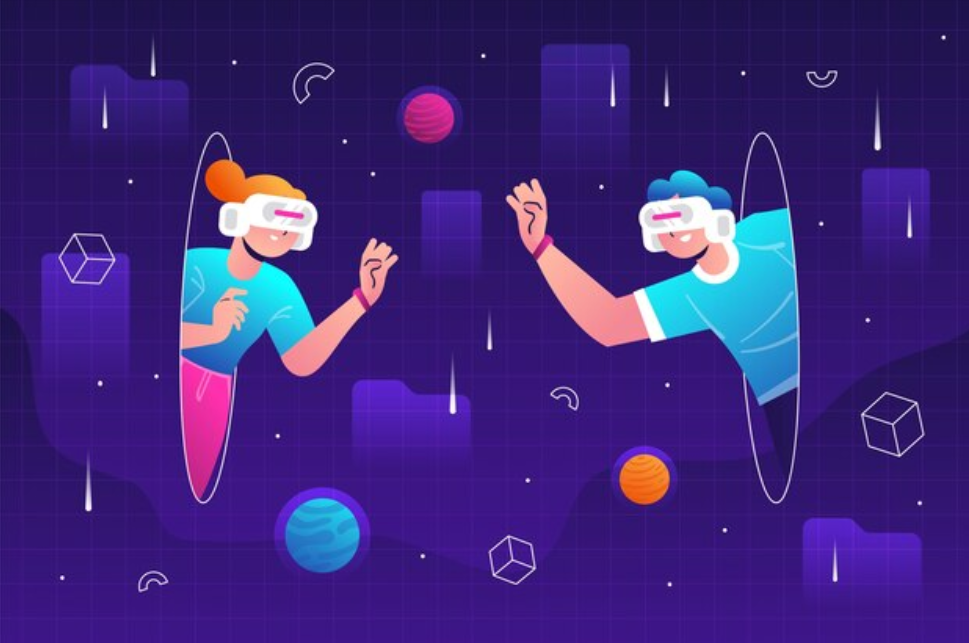
Games as a Service (GaaS) is a business model in the video game industry where games are developed, launched, and then constantly updated and expanded with new content, features, and services.
Instead of a one-time purchase, GaaS involves ongoing revenue generation through multiple means, among which can be subscriptions, in-game purchases, downloadable content (DLC), and even microtransactions.
Thus, Games as a Service have the following characteristics:
Continuous Updates: GaaS games are constantly updated to keep players engaged and provide new content, bug fixes, and improvements.
Live Services: These are often live service games, they feature live services like in-game events, competitions, and social interaction to maintain players’ interest and keep them playing.
Business model and monetization: The GaaS is a new business model that relies on various ways to monetize video games. Those ways can be purchases of game assets, virtual currency, season battle pass or other passes, or game subscription services.
Community Engagement: Developers motivate players and existing users to leave their feedback. By doing so, game developers of popular games ensure future game development according to users’ wishes and interests.
Long-Term Commitment: the GaaS model is designed for long-term player engagement. Certain games offer post-launch support for several years.
The most successful examples of GaaS are:
These are all free to play games that have generated constant long-term revenue streams through frequent content updates and keeping users engaged and investing in the game over a long period of time.

The gaming industry has undergone a significant evolution from traditional games to Games as a Service (GaaS). This transformation was possible thanks to technological advancements, a growing interest in live service games, and qualitatively new game content in general.
Games as a service evolved from free to play title service model. The revenue in these games came in the form of a microtransaction model when most users purchased in-game items, new equipment, cosmetic add ons or paid a small fee for boosting their in-game abilities and skills.
A monthly subscription model evolved also for the same reason: a need for funding after the initial release. A monthly subscription, even if it was very low, allowed to generate a constant income stream to move on with the existing and create more games and their versions.
The approach to game content also changed. More and more games constantly introduce new features and send their users free updates to keep them playing and purchasing more and more subscription service offerings.

The growth of cell phone popularity has revolutionized the gaming sector, making gaming more accessible, diverse, and profitable than ever before. Gaming has successfully adapted to the mobile platform’s unique strengths and constraints, leading to new genres of games, monetization models, and opportunities for developers and players alike.
Smartphones have made it easier for gamers to connect with friends and share their gaming experiences on social media platforms. Many games now have integrated social features that enhance the multiplayer and social aspects of gaming.
Fortnite
Developed by Epic Games, Fortnite is a free-to-play model battle royale game that has become a poster child for the GaaS model. Epic Games ensures frequent content updates, new seasons, battle pass options, in-game events, and a wide range of cosmetics and microtransactions thanks to the existence of in-game currency.
League of Legends
Developed by Riot Games, League of Legends is a free-to-play multiplayer online battle arena (MOBA) game. It continuously upgrades the features and releases new champions, skins, and in-game events. The game monetizes through microtransactions and a virtual currency called Riot Points.
Call of Duty: Warzone
Part of the Call of Duty franchise, Warzone is a free to play battle royale game that receives regular updates, new maps, weapons, and game modes. Players can purchase battle passes and in-game cosmetics by generating new revenue streams for the game.
Apex Legends
Developed by Respawn Entertainment, Apex Legends is a free game set in the Titanfall universe. It employs a seasonal structure with battle passes and in-game purchases, as well as uses a subscription model to generate revenues.
World of Warcraft
It is a massively multiplayer online role-playing game (MMORPG) developed and published by Blizzard Entertainment. After the initial release, the game quickly became one of the most iconic and successful games in the MMORPG genre and has been a major player in the gaming industry since its release in 2004.
Cloud gaming plays a significant role in the Games as a Service (GaaS) model by enabling the delivery of high-quality gaming experiences to a wide range of devices. These services leverage cloud infrastructure to host, process, and stream games to players, often eliminating the need for high-end gaming hardware. Here are several key characteristics of the GaaS ecosystem.
Cloud gaming makes games more accessible to a broader audience by eliminating the requirement for expensive gaming hardware. Players can access and play games on a variety of devices, including smartphones, tablets, smart TVs, and low-end PCs.
Cloud gaming allows players to start playing games instantly, without lengthy downloads or installations. This reduces friction and enhances the user experience, making it easier for players to engage with GaaS titles.
This technology often supports cross-platform play, enabling players on different devices to play together. This increases the reach and social aspects of GaaS titles.
Cloud gaming services can easily scale to accommodate player demand. Developers can handle traffic spikes during new content releases or events without players experiencing server-related issues.
This technology handles hardware upgrades and maintenance. Thus, players always have access to the latest gaming technology without needing to invest in expensive upgrades themselves.
These services can provide free-to-play games or offer subscription-based models, reducing the financial barriers to entry for players. This aligns with the GaaS approach of generating revenue through in-game purchases and subscriptions.
These platforms can deliver a wide variety of games, from AAA titles to indie games. This extensive game library allows players to explore different titles without purchasing individual copies.
It allows players to stream gameplay to social media platforms or share their gaming experiences with a broader audience. Remote play features enable gaming on the go or when away from a primary gaming device.
Cloud gaming growth reduces the barriers to entry for indie game developers and allows them to reach a global audience without the need for powerful hardware or extensive distribution networks.
From a game developer’s perspective, the Games as a Service (GaaS) model has brought about significant changes and opportunities in the gaming industry.
The main benefits are the possibility of creating a continuous revenue stream, high player retention, data-driven decision-making, a continuous dialogue between a developer and a player that leads to a qualitatively higher communication level, and the provision of live services.
Post-release support is a critical component of the Games as a Service (GaaS) development. In the GaaS model, game development doesn’t end with the game’s initial release; it’s an ongoing process that involves continuous updates and support.
The GaaS development cycle begins with the initial release of the game. This is when the game is made available to players.
Once the game is in players’ hands, developers actively seek and collect player feedback. This feedback can come from in-game surveys, forums, social media, and other sources. Players’ opinions and experiences are invaluable for shaping future updates and improvements.

Developers use player feedback and data analytics to identify areas for improvement, address bugs and glitches, and fine-tune gameplay elements. They may also introduce balance changes, quality-of-life improvements, and new content.
Regular content updates, often in the form of patches, expansions, or downloadable content (DLC): these updates can include new levels, characters, quests, weapons, and cosmetic items. Content updates help maintain player interest and engagement.
Developers frequently organize in-game events, challenges, and competitions to keep user engagement levels. These events often come with unique rewards and encourage players to return to the game regularly.
Developers maintain a strong connection with the gaming community through social media, forums, live streams, and community management. They respond to player inquiries and address concerns, fostering a sense of community and loyalty.
Games as a Service (GaaS) have encountered various regulatory issues and controversies that have raised concerns among players, industry stakeholders, and regulators. For example, loot boxes resemble gambling too much and this is why this feature attracts the attention of regulators. Another regulatory concern is customer protection because in Games as a Service, along with a possible monthly fee, players are encouraged to make in app purchases for a better experience.
Privacy and security are another concern of regulators because such games collect tons of data about users which is later stored on remote servers. If a cloud server of a game is broken into, the data may become exposed to cyber criminals.
Unauthorized modifications are another detail that regulators worry about. Regulatory issues can arise when players create or use cheats, hacks, or unauthorized modifications that disrupt the gaming experience or infringe on intellectual property rights.
There have been controversies regarding the lack of transparency in GaaS monetization models, particularly about loot boxes and in-game purchases. Some countries have demanded greater transparency in disclosing odds and probabilities associated with these mechanics.

Games as a Service (GaaS) is a dynamic and ever-evolving model in the gaming sector. Several trends are shaping the future of GaaS, reflecting changes in player preferences, technology, and industry dynamics. Here are some key future trends in Games as a Service:
Cross-platform play
Cross-platform gaming is becoming more common, allowing players on different devices to play together. This trend is expected to continue, further blurring the lines between consoles, PCs, and mobile devices.

Blockchain and NFT integration
The use of blockchain technology and non-fungible tokens (NFTs) in Games as a service is gaining attention. These technologies have the potential to create unique in-game assets and digital ownership, offering new monetization and player engagement opportunities.
Player-generated content
The trend of allowing players to create and share their own content, such as mods, maps, and skins, is likely to expand. This promotes player engagement and extends the lifespan of games.
Live-service integration
More games will adopt the live-service model, which includes regular content updates, events, and in-game activities. This keeps players engaged and returning to the game over extended periods.
Personalization and AI

Games will continue to use AI and player data to deliver personalized experiences, tailoring gameplay and content recommendations to individual player preferences.
Sustainability initiatives
Concerns about the environmental impact of gaming may drive Games as a service providers to implement sustainability initiatives. This could involve reducing energy consumption and minimizing the carbon footprint of server farms.
Responsible monetization
As regulatory scrutiny continues, Games as a service providers will need to adopt responsible monetization practices, ensuring that players are protected from excessive spending and that loot box mechanics are transparent and fair.
Retro and legacy games
Some Games as a service providers may explore the addition of older games and classic titles, those that were played with a Nintendo Switch, such as Candy Crush and other games, to their services to cater to nostalgia-driven gaming experiences.
Community engagement
Building and maintaining strong gaming communities through social media, forums, and in-game events will remain a priority for GaaS providers.
Inclusivity and accessibility
Games as a service ensure that games are accessible to all players, including those with disabilities, will continue to be a growing trend. Developers will focus on creating inclusive gaming experiences.
As gaming continues to evolve, Games as a Service providers will need to adapt to these trends and innovate to meet the changing demands of players. The future of Games as a Service will likely involve a blend of emerging technologies, evolving business models, and a strong emphasis on player engagement and satisfaction.
Would you like to start investing in the most impactful crypto gaming, NFT and metaverse projects with GamesPad? Learn how in this comprehensive tutorial!
Disclaimer. This material should not be construed as a basis for making investment decisions or as a recommendation to participate in investment transactions. Trading digital assets may involve significant risks and can result in the loss of invested capital. Therefore, you must ensure that you fully understand the risk involved, consider your level of experience, investment objectives, and seek independent financial advice if necessary.